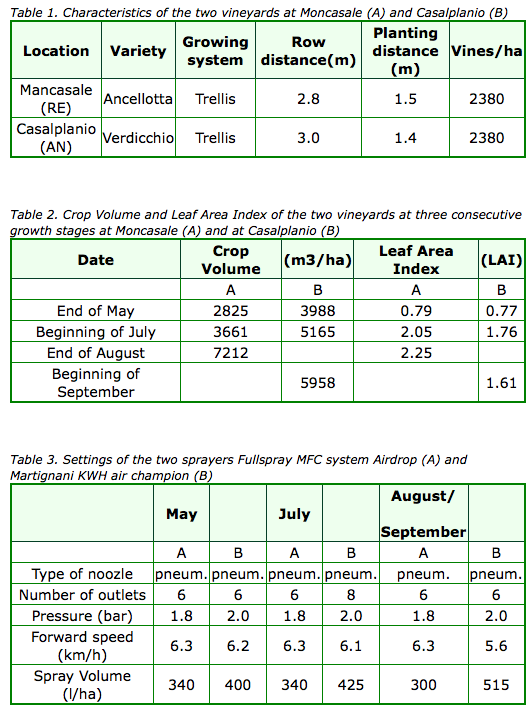Verification of the crop adapted spraying (CAS) method for plant protection product dose adjustment
ontermini, A , Casoli, L
Consorzio Fitosanitario Provinciale di Reggio Emilia - Via Gualerzi, 32 - 42100 Reggio Emilia (Italy); e-mail: montermini@fitosanitario.re.it
Salgarollo, V, Prencipe, N
Syngenta Crop Protection S.p.A. - Via Gallarate, 139 - 20151 Milano (Italy); email: valerio.salgarollo@syngenta.com
Wohlhauser, R, Wolf, S
Syngenta Crop Protection AG - Schwarzwaldallee 215 - 4058 Basel (Switzerland); email: ronald.wohlhauser@syngenta.com
Introduction
Italian vineyards are characterised by a great number of different varieties, different growing systems and different forms of plantations. This heterogeneous situation makes it difficult to manage water volumes and doses of products to be applied per hectare in an appropriate way.
In 2006 Syngenta and the Provincial Crop Protection Association of Reggio Emilia initiated collaborative field trials. The objective of the trial work was to make a simple to use tool available to growers and technicians, which would allow them to determine product doses correctly. Through field trials it should be clarified whether the method TRV (tree row volume), modified to vineyards by a specific Syngenta methodology (Salgarollo et al. 2006), could help farmers to determine for a given vine crop the correct amount of product per hectare. By tailoring the dose of the product to the actual leaf area present and by properly calibrating the sprayer it is possible to obtain a consistently good efficacy, to reduce the loss of product by drift and run-off and thus reduce the impact on the environment.
In 2006 two field trials were set up in Emilia Romagna and in Marche. The traditional standard doses of the products were compared with the crop adapted spraying method. Prior to spraying the experimental plots the sprayers were carefully checked for correct functionality.
The main objectives of the trials were to measure at three consecutive growth stages the crop parameters which are relevant for the determination of the crop volume and the leaf area index, to check the quality of the applications at these three growth stages and to compare the biological efficacy of the applied products of which the dose was calculated according to the standard method and the method CAS.
Materials and Methods
The vineyards in which the trial work was carried out were characterised by the measurements as summarised in table 1. In both vineyards the following crop parameters were measured for three consecutive growth stages: the height of the leaf canopy, the average width of the leaf wall, the distance between the plant rows, the number of shoots per plant, the number of leaves per shoot, and the average leaf surface of a representative sample of leaves. The calculated values for the crop volume and the leaf area index are summarised in table 2.
From mid May till the end of August fungicide treatments were carried out in order to protect the crop against powdery mildew, downy mildew and grey mould. In one plot the doses corresponded to those normally applied by the farm as a standard procedure following the instructions on the labels. In the other plot the doses were calculated according to the present crop volume as determined by the method CAS. In both plots the same products were applied at the same time. Italian built sprayers were used in both experiments; details are shown in table 3.
Based on earlier measurements the full doses of the products as given on the labels corresponded to a basic crop volume of 4000 m3 per hectare. At three consecutive growth stages as listed in table 3 measurements of the spray operation were made by using a fluorescent tracer to check on the quality of the spray distribution and the quantity of the spray deposition per unit leaf area.

Results
Mancasale (A)
The development of the leaf canopy and the crop volume of this vineyard were comparable to other vineyards in Europe. However in August an unusually high crop volume of 7000 m3/ha was determined which was due to a lack of summer pruning and a delayed trellising of the shoots. A good correlation was obtained between the LAI and the crop volume, which confirmed the established relationship between these two parameters. Based on this correlation, the crop volume, which is easy to measure under field conditions, can serve as a useful tool to estimate the LAI with adequate precision without recurring to cumbersome measurements and complex calculations.
Based on the tracer measurements it was concluded that a satisfactory deposition of product in all parts of the plants had been achieved and that a high percentage of the total amount of product applied was found on the target areas of the crop.
Casalplanio (B)
The development of the leaf canopy and the crop volume of this vineyard were comparable to other vineyards in Europe. A good correlation was obtained between the LAI and the crop volume, which confirmed the established relationship between these two parameters. The spray equipment used on this farm gave a good deposition of product on all target areas of the crop and a satisfactory percentage of the applied product was found on the crop.
In the plot with the dosage according to the CAS method the total amount of product applied with the two sprays in May was 20% less than for the respective two treatments in the plot with the standard doses of the same products. The quantities of products applied through the remaining sprays were practically the same in both plots.
In both vineyards, it was not possible to evaluate the biological efficacy of the standard versus the reduced doses because there was no significant attack of any disease.
Conclusions
Based on two field trials carried out in 2006 it was concluded that it is possible in Italian vineyards grown as trellises to manage the doses of crop protection products according to the CAS method. This means that the quantity of the products to be applied is calculated in relation to the vegetative development of the crop at the time of spraying. The dosage of products according to the CAS method and their application with a well calibrated and adjusted sprayer helps to reduce the loss of crop protection products through drift and run-off with a concurrent reduced impact on the environment. Further experiments are necessary to demonstrate that the dosage of the products according to the CAS method gives a satisfactory biological efficacy, which is comparable to that currently, obtained by standard treatments with the dosage of products according to labels.
References
Salgarollo V, Innocenti M, Prencipe N, Wohlhauser R, Casola F, (2006) Messa a punto di una metodologia per la valutazione della qualità della distribuzione degli agrofarmaci per il corretto impiego del metodo "Tree Row Volume" in viticoltura. Atti Giornate Fitopatologiche, 1, 521-527











